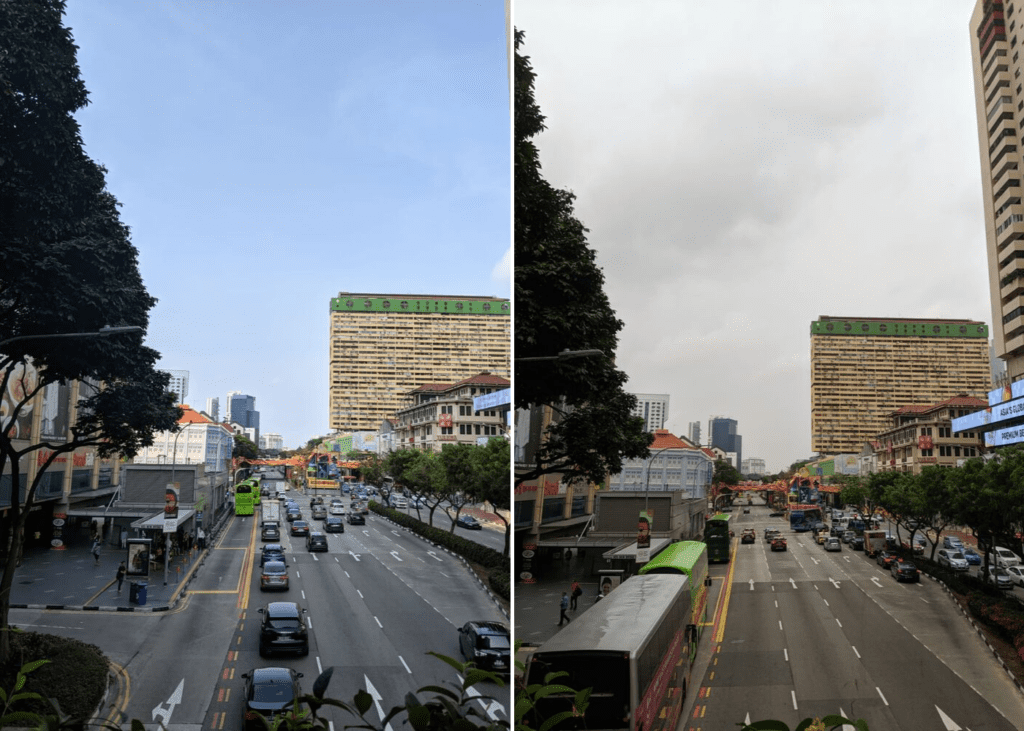
It’s haze season but take a deep breath and keep calm with these tips. We show you how to get through the haze if PSI levels continue to inch upward.
As much as we hate to admit it – haze season is upon us. It might look like a post-apocalyptic world if you step outside, with the sweltering heat, smoggy atmosphere, and merciless sun but that doesn’t mean we have to accept defeat. Dry throat, watery eyes or itchy skin are only a few of the nasty issues we have to deal with. But we’ve got your back. Hold on to this guide while we all wait this out.

Why does it happen?
We may not have four seasons but we are pretty sure, Singaporeans and long-term residents will agree that haze is our fourth season with rainy, hot and super hot being the other three. Most of the time, haze is caused by forest fires in Sumatra, Indonesia. This slash-and-burn technique not only damages the environment and pollutes the air in this region but also raises numerous ethical issues.
Is the air unhealthy?

Our primary instinct is to rely on our senses. “Is there a strong, burning smell?” or “Do things seem foggy?” comes to mind. But to get a more accurate reading, Pollutant Standards Index (PSI) and Air Quality Index (AQI) is your go-to option.
The former is more commonly used and is measured by the National Environment Agency (NEA).They calculate the PSI by taking an average reading over 24 hours of six pollutants: particulate matter (PM10), fine particulate matter (PM2.5), sulphur dioxide (SO2), nitrogen dioxide (NO2), ozone (O3), and carbon monoxide (CO).
The nastiest one being the fine particulate matter (PM2.5) as they are so tiny (fine particles of 2.5 microns or smaller, to be exact), they can make their way to your lungs easily. Once the PSI rises to 101, it is considered unhealthy and if it reaches 201, it is in the very unhealthy range and it’s best to avoid any outdoor activities. To check on the air quality, visit the NEA’s website.
Take special care
People most susceptible to the haze are pregnant women, the elderly and people with chronic lung and heart disease. Healthy people can get afflicted by it too, especially if you’re into outdoor activities.
What can you do?
It isn’t all grim, there are a couple of precautionary measures you can take to combat the haze.
- An N95 mask should be in your arsenal, especially if you’re going to be out and about. An N95 mask covers the nose and mouth and helps protect you by blocking out 95 percent of small particles in the air you breathe. They are available in clinics, pharmacies and major supermarkets. Do take note that young children, pregnant women, and the elderly should avoid using these masks due to the respiratory effort involved in using them.
- Keep windows and doors closed at all times.
- Hydration is always important, especially when your throat feels stuffy – drink lots of water
- Don’t forget to hydrate your skin as well. Moisturise to prevent itching.
- If you wear contact lenses, opt for your glasses instead. Contacts can aggravate any burning or itching sensations in the eye caused by air particles.
- Air purifiers can come in handy too. Just make sure that you get the ones built with high-efficiency particulate air (HEPA) filter as they are capable of removing 99.7 percent of particles that are 0.3 microns or larger, making them better at managing the haze.

